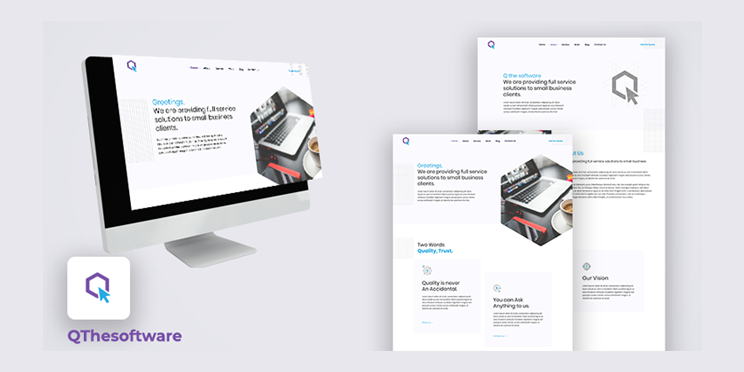Display advertising has emerged as a cornerstone strategy for businesses aiming to boost sales and foster growth.
Unlike traditional advertising methods, display ads offer the unique advantage of targeting potential customers where they spend a considerable amount of time: online.
From understanding the basics of display advertising to leveraging advanced targeting techniques, this guide will walk you through how to effectively use display ads to your advantage.
1. Understanding Display Advertising
What exactly is display advertising? At its essence, it’s a method that allows businesses to visually communicate with potential customers through ads placed on various online platforms.
These ads come in numerous formats, from static banners to animated graphics and even interactive media, providing a rich palette for creative expression.
They’re the billboards of the digital highway, but with a twist: they can be targeted to show up in front of a specific audience based on demographics, interests, and online behavior.
This precision targeting is what makes display advertising an indispensable tool in the digital marketer’s arsenal.
Key Points to Remember:
- Diverse Formats: Whether it’s a simple image or a complex video, choosing the right format can significantly impact your ad’s performance.
- Target Audience: Understanding who your audience is and tailoring your ads to meet their interests and needs is crucial.
- Ad Placement: The location of your ad on a website can affect visibility and engagement. Opt for placements that align with user behavior.
2. Crafting Your Ad Content
When it comes to creating ad content that resonates, think of it as storytelling. Your ad should not only look appealing but also convey a message that speaks directly to your audience’s needs and desires. Here’s how to strike the perfect balance:
Dos:
- Keep your message clear and straightforward. Your audience should understand what you’re offering and why it matters to them.
- Use visuals that capture attention but also complement your message. An image is worth a thousand words, after all.
- Include a call-to-action (CTA) that guides users on what to do next. Whether it’s to learn more, sign up, or make a purchase, make it clear and compelling.
Don’ts:
- Overload your ad with too much text or complex language. Remember, simplicity is key.
- Ignore the importance of design. Poorly designed ads can deter users from engaging with your content.
- Forget to test different versions of your ad. A/B testing can reveal what works best and help optimize your ad content for better results.
3. Targeting and Retargeting
Ever wonder how some ads seem to follow you around the internet, reminding you of websites you’ve visited or products you’ve viewed? That’s retargeting at work, a powerful technique that targets users who have previously interacted with your brand but didn’t make a purchase.
Here’s a breakdown of how targeting and retargeting can amplify your display advertising efforts:
Targeting Strategies:
- Demographic Targeting: Reach users based on age, gender, income level, and more.
- Interest-Based Targeting: Show your ads to users with specific interests or hobbies.
- Behavioral Targeting: Target users based on their online behavior, such as websites visited or search queries made.
Retargeting Essentials:
- Cookie Tracking: Utilize cookies to track users who visit your website and display your ads to them as they browse other sites.
- Segmentation: Not all visitors are the same. Segment your audience based on their behavior on your site for more personalized retargeting campaigns.
- Creative Refresh: Regularly update your ad creatives to keep retargeted ads fresh and engaging for users who see them multiple times.
4. Measuring Success
How do you tell if the display advertisements you’re running are effective? Knowing and using the appropriate metrics is crucial. There’s more to campaign performance measurement than simply counting clicks and impressions.
It entails taking a closer look at how these advertisements support your overarching company goals. The following are the important metrics:
- Click-Through Rate (CTR): The proportion of people who click on your advertisement after seeing it is known as the click-through rate, or CTR. A greater CTR suggests that your advertisement is interesting and relevant to your target market.
- Conversion Rate: Of the users who clicked on your ad, how many took the desired action? This could be making a purchase, signing up for a newsletter, or any other goal you’ve set.
- Return on Investment (ROI): Ultimately, you want to know if the money you’re spending on ads is driving a profit. Calculate your ROI by comparing the revenue generated from your ads to the cost of the ads themselves.
Tips for Improving Your Metrics:
- Continuously refine your targeting to ensure your ads are being shown to the most relevant audience.
- Experiment with different ad creatives and formats to see what resonates best with your audience.
- Optimize your landing pages to ensure that once a user clicks on your ad, they’re taken to a page that encourages them to take action.
For businesses in North Carolina seeking to enhance their digital advertising efforts, partnering with a PPC service provider in North Carolina can provide the expertise and support needed to achieve outstanding results.
5. Choosing the Right Platforms
Not every platform will be a perfect fit for your display advertising goals. Each has its own unique audience and benefits, making it crucial to select the ones that align best with your target demographic and campaign objectives. Here’s how to navigate this choice:
- Google Display Network: With access to over 2 million websites, the Google Display Network offers unparalleled reach. It’s ideal for businesses looking to boost brand awareness and reach a vast audience.
- Social Media Platforms: Platforms like Facebook, Instagram, and LinkedIn offer robust targeting options, making them perfect for reaching specific demographics and interest groups.
- Niche Websites: For businesses targeting a particular industry or hobby group, advertising on niche websites can result in higher engagement rates due to the targeted nature of the audience.
Things to Consider:
- Your Audience: Where does your target audience spend their time online? Pick the platforms where your target market is most engaged.
- Your Goals: Are you looking to drive sales, increase brand awareness, or gather leads? Choose platforms that will help you achieve the goals of your campaign.
- Your Budget: Different platforms have varying cost structures. Consider your budget and the potential ROI of each platform.
By carefully selecting the right platforms for your display ads, you can ensure that your advertising efforts are both effective and efficient, reaching your intended audience in the most impactful way possible.
Conclusion: The Global Vincitore Adbant
Display advertising holds immense potential for businesses looking to drive sales and growth. By crafting engaging content, targeting the right audience, and measuring your ads’ success, you can leverage display ads to significantly impact your business’s bottom line.
At Global Vincitore, we understand the nuances of digital advertising and are dedicated to helping our clients navigate the complexities of display ads.
With a team of technology enthusiasts, creative designers, software engineers, and marketers, we are the most trusted PPC agency in North Carolina for driving success.
Whether you’re a small enterprise or a larger organization, our tailored services are designed to meet your unique needs and help take your business to the next level.
Frequently Asked Questions
Q1. How can display ads help sales and business growth?
A. Display ads improve the visibility of brands, drive more people to websites, and produce leads, all of which help businesses expand and make more sales. Businesses may raise brand recognition and compel potential customers to take desired actions by delivering aesthetically appealing material to targeted audiences.
Q2. What are the targeting options in display ads?
A. Display ads include a variety of targeting possibilities, such as remarketing (targeting users who have previously interacted with your website or ads), behavioral targeting (online behavior and interests), contextual targeting (related content and keywords), and demographic targeting (age, gender, and geography).
Q3. How can we measure the success of display ad campaigns?
A. For display ads, click-through rate (CTR), conversion rate, impressions, and return on ad spend (ROAS) are among the key performance indicators (KPIs). Track these metrics, examine user behavior, and improve campaign performance with the use of analytics tools.




